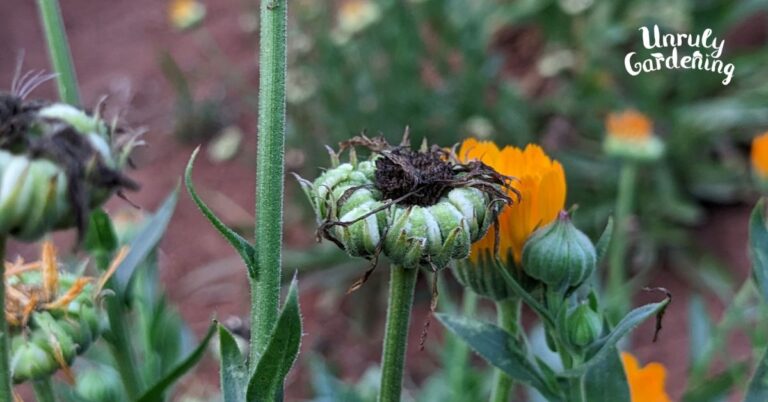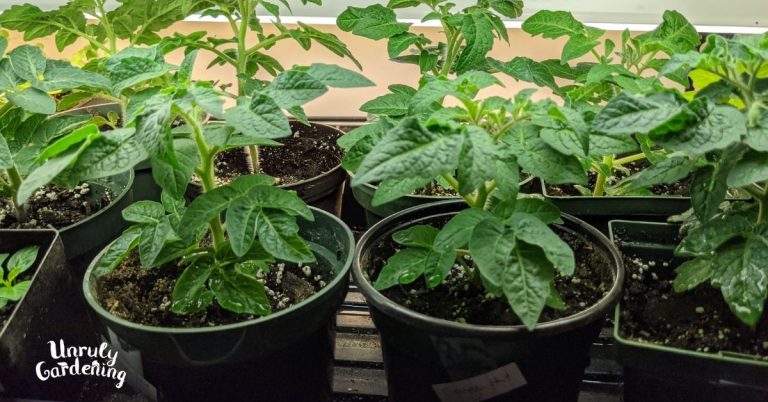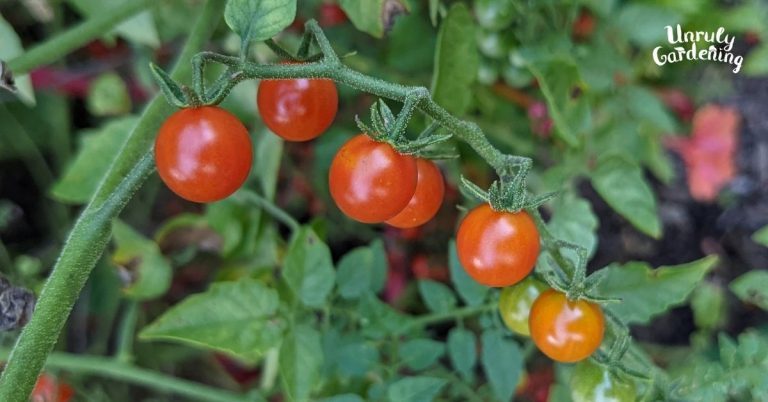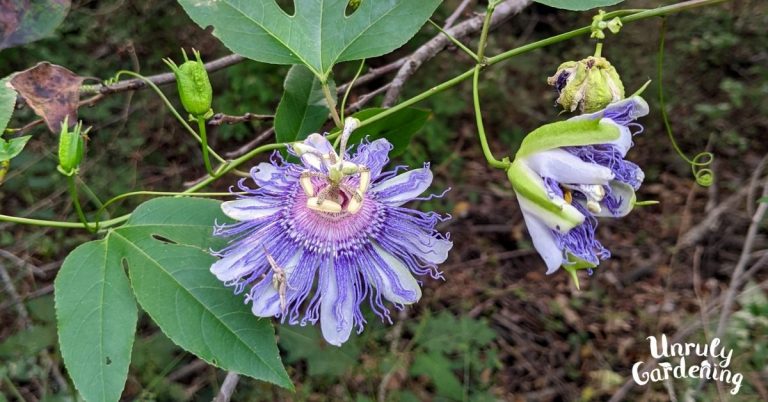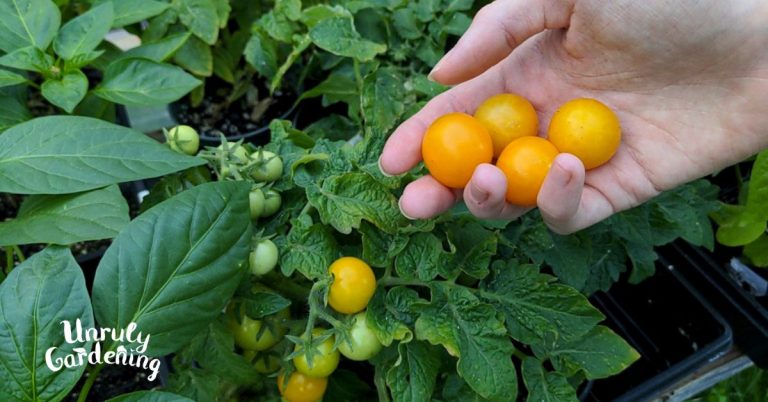How to Grow Petunias from Seed
Learn how to grow your own garden petunia flowers from seed!
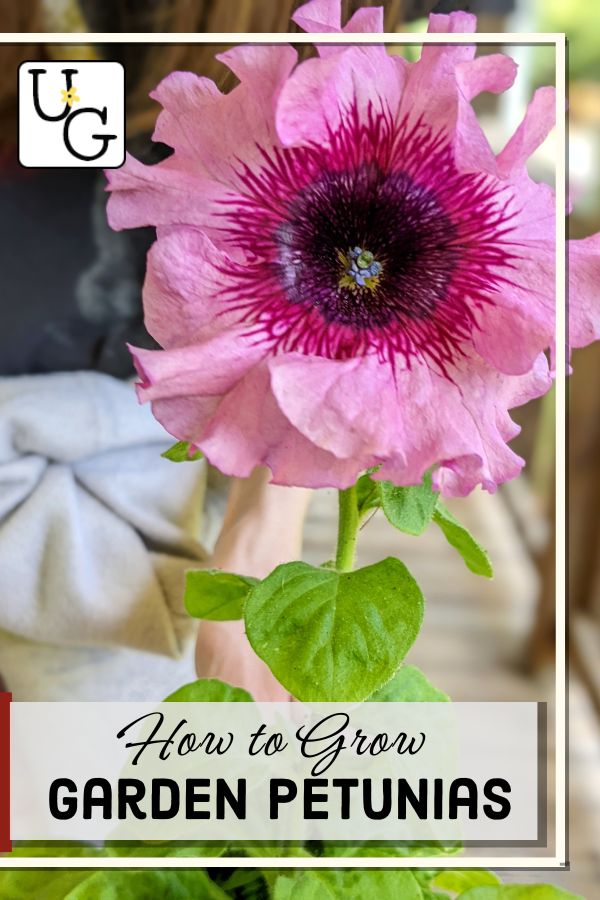
An old garden classic, petunias are one of the most popular garden flowers out there – and for good reason!
These lovely flowers have simple needs and few wants, and a super-long bloom time that spans from spring straight through to fall.

Growing Petunias At a Glance
Annual flower: Petunia (Petunia multiflora, P. superbissima, P. hybrida), some varieties may sometimes be grown as a perennial in zones 9-11.
- Seed Size: Tiny
- Sowing Method: Surface sown
- When to start: 8-10 weeks before your estimated final frost date.
- Cold-hardy: No
- Transplant time: Transplant outdoors after all risk of frost has passed.
- Sunlight required: Full sun.
- Possible to grow in pots?: Yes. 1-3 plants per 12″ pot.
- Spacing: 6″-12″ inches apart, depending on variety
- Estimated days until germination: 7-14 days
- Pinching/Pruning: Optional, but provides a more compact growing habit
- Bloom time: Spring through Fall
- Attractive to Pollinators?: Yes
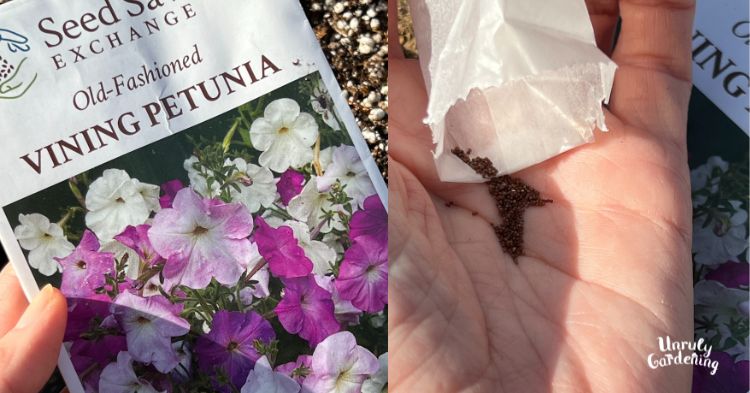
Sowing & Seedling Care
Prepare your favorite soil blend and seedling containers by pre-moistening the soil before filling it into the containers. Make sure the containers you use have drainage holes, and that the soil is well moistened, but not sopping wet.
Gently scatter your petunia seeds over the surface of the soil, and gently tamp them in place using your fingertips. As the seeds are so small, it’s best to sow petunia seeds in a draft-free room.
Because the seeds are surface-sown, they’ll dry out quickly. To avoid displacing the tiny seeds when watering them, cover your containers with a clear covering in order to let light in and slow moisture evaporation.

A greenhouse top, a clear pane of glass, or clear plastic wrap can be used to cover the seedling containers to help with moisture retention until germination.
Ideally, place the seed containers underneath a grow light to await germination, dropping the light down so it’s a few inches away from the top of the container, giving them a warm and bright environment. If you don’t have grow lights, use your brightest windowsill, rotating the containers daily for even direct sunlight exposure. Windowsills can be cold – you may wish to use a heat mat, as well, to promote swifter germination.
When placed in a warm, bright location, it should take anywhere between 7-14 days for the seeds to germinate.
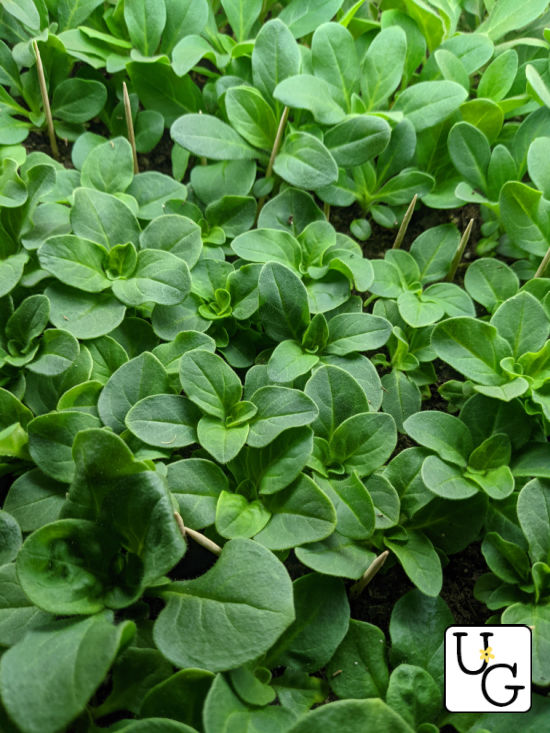
Seedling Care
Petunia sprouts should continue to be kept moist, warm, and in the light as they grow. The clear covering on the container can be removed either right when you notice them germinating, or can wait until the seedlings are touching the covering.
The grow light should be bright and kept close to the seedlings, ideally within 1-2 inches. If growing in a windowsill, rotate the containers daily. This prevents stretching and leaning.
Avoid letting the soil completely dry out, but don’t let it stay sopping wet. Try to keep seedlings evenly moist at all times.

Seedlings can start being divided, transplanted, and potted into individual containers once they have at least 2-4 true leaves. Each plant should be given its own pot to prevent stunting. Otherwise, grow them in a container that gives them enough space to last until it’s time to move out into the garden.

Transplanting Outdoors
Once the seedlings are of good size, are at least 8 weeks old, and all danger of frost has passed, it’s time to move them to the garden.
Petunia plants need to harden off for 1-2 weeks before moving out into the garden. Just place the plants in a sheltered spot outdoors, like your porch, for an increasing amount of time each day, but bring them in at night.
This gives them time to gradually acclimate from their cushy indoor life, to the temperature and light fluctuations of outdoors.
Choose a location that has full sun, good drainage, and light, fertile soil. A slightly acid pH (6-7) is preferred. You may need to mix in some organic matter or sand in if you have very heavy clay soil.
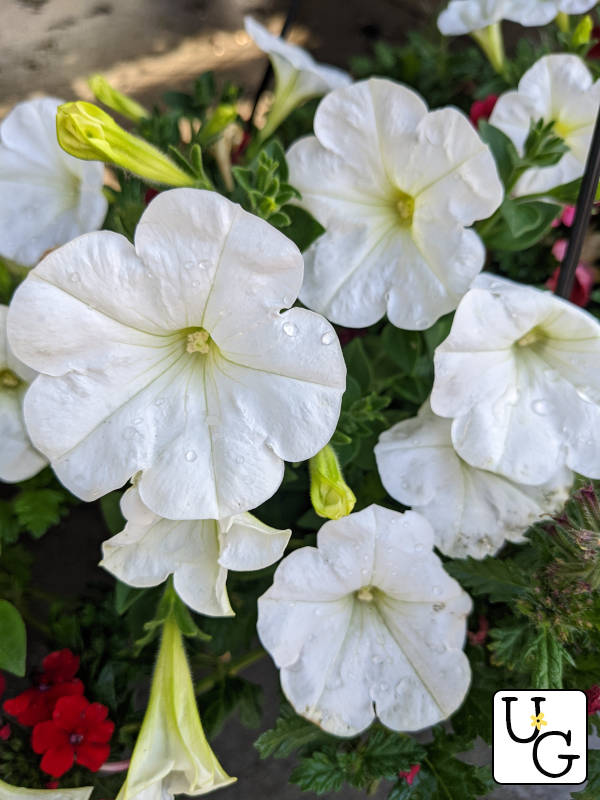
To plant outdoors, dig a hole large enough to fit the rootball of the petunia. They enjoy a good scoop of compost, so if you want to give them some, mix it in the hole now with some of the dirt from the garden. Space plants 6-12 inches apart, depending on your variety.
Place the petunia seedling in the hole, cover the roots up, burying them to the same point they were at when they were in the pot, and water well.

Plant Care
Petunias are usually rather hardy. Water them well once a week, making sure to soak the soil at the base of the plant. If it’s rained that week, you can skip on watering them. They can actually tolerate some level of drought, but it’s preferable to give them a drink when it’s extremely dry out.
Plants in pots or window boxes will need far more frequent watering, possibly daily, as well as regular fertilizing with a liquid fertilizer for flowers. Plants in the garden, especially those growing in fertile, amended soils, will likely not need fertilizing.
Deadhead flowers and seed pods whenever possible to encourage a better and longer display of flowers. Pinching back flower stems will help create a bushier plant.
Some petunias will self-seed year from year in the garden. Allowing flowers to form, wilt, and create seed-heads by not deadheading will encourage this, while deadheading will help reduce the possible spread.
Garden Petunia Notes
Petunias are an old garden classic for a reason. Minimal care, simple needs, and a beautiful, long-lasting display of flowers make them well worth learning how to grow from seed.
It’s likely you’ll notice all sorts of winged visitors with your petunias. Hummingbirds, bumblebees, honeybees, butterflies, and native pollinators all can be attracted to the lovely blooms. This makes them an ideal addition to a butterfly garden!
Both heirloom and hybrid petunias can be grown using the methods detailed above. By learning to grow your own petunias from seed, you open up a wider range of colors and varieties to invite into your garden.
Delightfully, there’s a huge number of petunia varieties out there, and such a wide range of colors, petal types, and growth habits to choose from!

